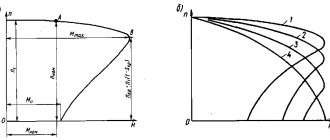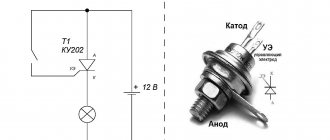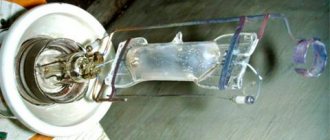Most modern devices do not operate on mains power, but on batteries. Throughout their existence, they have changed their appearance more than once; only the principle of operation has remained constant. An alkaline battery is also called alkaline.
Sizes and types of Duracell batteries
- Alkaline batteries:
- standard sizes AAA, C, D at 1.5v, as well as batteries 9V MN1604 (9v), 4.5v MN1203 (4.5v);
- similar-sized nickel-metal hydride batteries HR6, HR03, HR14, HR20 at 1.2v and battery HR9V at 8.4v;
- Power supplies for photographic equipment:
- lithium cylindrical 3 volts 123, 223 and CR2;
- lithium cylindrical 6 volt sizes 245 and 28L;
- lithium disk 3 volt 1/3N (diameter 11.6 mm and height 10.8 mm);
- lithium CR-V3 3 volt quadrangular shape 52x14x28 mm;
- alkaline disk 625A at 1.5 volts.
- Electronics batteries:
- lithium tablets 1220, 1616, 1620, 2022, 2025, 2032, 2430, 2450 at 3 volts;
- silver oxide disk element 357/303/R357/7 at 1.55 volts;
- alkaline tablets LR43, LR44, LR54 at 1.5 volts;
- alkaline cylindrical AAAA at 1.5 volts.
- For 1.55 volt silver oxide watches: 362/361, 364, 371/370, 377, 386/301, 389/381, 392/384, 394, 399/395.
- Alkaline cylindrical for safety devices:
- at 1.5 volts - N, J;
- for 12 volts - MN21, MN27.
The following power sources are most common in the CIS:
- cylindrical alkaline sizes: AA, AAA, C, D;
- 9 volt alkaline batteries (Krohn type);
- batteries and chargers;
- special ones marked MN21, MN27, 123, 28L, CR2;
- "Tablet" type.
Duracell tablets
The most common disk batteries intended for small medical devices, bank card readers, and small electronics are the following:
- lithium special sizes 2022, 2025, 2032 at 3 volts, which operate in the temperature range from -40 to +60 degrees and are often used in motherboards to maintain the functionality of CMOS memory;
- alkaline special LR44 at 1.5 volts, operate from -20 to +54 degrees.
All of them support Duralock technology, while lithium cells can be stored for up to 10 years, and the LR44 alkaline source can be stored for 5 years.
2032. They are marked DL2032 (according to the IEC standard - CR2032), have a capacity of 220 mAh, and weigh 2.8 grams. Dimensions: 20x3.2 mm.
2025. They are marked DL2025 (IEC – CR2025), capacity 150 mAh, weight 2.2 grams. Dimensions 20x2.5 mm.
2016. They are marked DL2016 (CR2016), capacity 75 mAh, weight 1.8 grams. Dimensions 20x1.6 mm.
Expert opinion
Viktor Pavlovich Strebizh, lighting and electrical expert
Any questions ask me, I will help!
However, you can make them yourself; craftsmen make such devices from cheap Chinese chargers for mobile phones. If there is something you don’t understand, write to me!
Why can't you recharge regular batteries?
If you think about the question of whether it is possible to charge ordinary batteries in a charger, then you can definitely answer the following: they are not intended for this.
But many are not stopped by warnings. At the same time, some can even boast of successful experience. Why is this happening? There is a rational explanation for this.
Regular batteries are designed differently. Most often they are salt; ions flow from the electrolyte to the electrodes, the supply of which runs out over time.
In addition, most cheap copies oxidize during operation. Most often, their potential can only be used by half, and after the formation of a crust of dielectrics, they become unusable.
In expensive options such as Duracell and Energizer, manufacturers actively combat salt formation. Therefore, most often these batteries lose their charge by at least 90 percent.
When consumers place a regular battery in a charger, the current causes the salt crust to break down. As a result, residual charge becomes available that has not been consumed. And the power supply itself does not charge.
You cannot keep regular cells charged for more than 10 minutes or until they become very hot. Otherwise, unpleasant consequences may occur:
But is it different for lithium-ion batteries in phones and laptops?
The same applies to lithium-ion batteries. Of course, no one has canceled the concept of “charging and discharging simultaneously with the release of heat” (if you understand what we’re talking about), but in practice the EMF of a regular gadget is about 3.7 V, and the charging voltage is much higher (~5 V). That is, the battery is not used while charging.
About the concept of “charging and discharging simultaneously with heat release”
Here's what sometimes happens in laptops: If a battery-powered external power supply device can handle heavy loads, the battery ends up being used as a buffer for external power.
For example, a circuit requires a circuit of 10 A for 30 seconds, then 1 A for the next 30 seconds. Yes, voltage matters, but let's just stick to current to explain things more simply.
So overall we need 5.5A on average. Let's assume that the external power supply can provide 6 A (laptops usually have 4.74 A and 6.3 A adapters, but let's simplify for the sake of this example).
Thus, for 30 seconds of every minute the battery is discharged at a rate of 4.4 A. During the remaining 30 seconds, it can be charged at 4.6 A. In this case, 0.2 A is the charging and discharging loss. In other words, at the end of the cycle the battery is at the same level as before. This 0.2A is what generates the heat.
Can alkaline batteries be charged?
To correctly determine the battery charging time, use the standard formula:
, where 1, 4 is the coefficient used, because not all the current goes into the battery charge, you can call this a discount on heat transfer.
What kind of lighting do you prefer?
Built-in Chandelier
Some of the current turns into heat, so the battery overheats.
If the capacity is 2400 mAh, and the charger current is 150, then the formula turns out: 1.4 * 2400 / 150 = 22.4
To charge a battery with a capacity of 2400 mAh with an incoming charge of 150 mAh it will take up to 22 and a half hours. Some chargers do not detect the battery charge; voltage is supplied constantly, even if the battery is already fully charged. This approach can harm the battery by shortening its shelf life or rendering it unusable due to overheating.
The batteries ran out, and as always, at the wrong time :- (most likely, everyone who deals with mobile devices has had such a problem. What many do in this case: throw away the used power source
Effective online calculator
The question that worries me is how many hours it takes to charge the batteries, there is a logical and simple answer. Thanks to a simple formula for calculating the result, you can obtain the necessary data in a few seconds. To do this, you need to enter the parameters of the battery capacity and charger current into the table. Click the “calculate” button and accept the ready answer.
Attention: the resulting value must be multiplied by a factor greater than 1, because part of the energy turns into heat and is lost, especially at temperatures below zero. When calculating the charging time of nickel batteries, a percentage ratio of 1.4 is suitable
The battery discharge voltage should not be less than 0.9V, regardless of the discharge current. In most devices, the threshold value is determined automatically.
You can interrupt the charge, but the total value should not be less than the calculated value. During the charging process, the device body may heat up, the maximum temperature is 55 degrees. In this case, the device switches from the main charging mode to the secondary charging mode. The temperature drops and the process is renewed.
How to charge a battery: which ones you can, in a charger, at home.
- Through the power supply.
We connect it to the network and connect the battery with the connection wires, observing the polarity. It is important to prevent the battery from heating above 40-50 degrees. After this, turn off the power supply and let the battery cool. When it becomes warm, reconnect the power supply to the electricity for about 2 minutes, then place the battery in the freezer for 10 minutes. You can use it 2-3 minutes after removing it from the cold. A battery charged in this way can last for some time. - By heating method.
How to charge a Krona battery
Chargers available on the electrical goods market are designed to charge the battery Krona. Such devices differ in their capabilities and power ratings. However, you can make them yourself: craftsmen make such devices from cheap Chinese chargers for mobile phones.
The battery is charged with a current of 10-20 milliamps, the limit is 40 mA. The charging time is calculated using the following formula:
Charging time (in hours) = Coefficient. multiply by the capacity (in mAh) divided by the charging current. The increasing factor is selected in the range from 1.2 to 1.6 depending on the value of the charging current. The lower the current value relative to the capacitance, the greater the coefficient.
Important! You can only recharge the rechargeable Krona, that is, only when the battery is not a battery. A special designation on the body of the model indicates this. It indicates the capacity and the words “rechargeable” .
How to understand how long to keep charging the battery
It may well happen that after putting the battery on charge and waiting for some time, you discover that no charging has occurred. There is no need to suffer any further. Clearly something went wrong. Maybe the battery itself is faulty, or maybe the charger is faulty.
The most important thing when dealing with batteries is to charge them correctly. And for this you need to know exactly and observe their charging time.
To determine this time, you can go in two ways:
- Go to one of the specialized sites and calculate everything in an online calculator. Everything here is simple and clear.
- You can calculate this time yourself. A formula has been developed for this.
Formula for calculating charging time and its fineness
To calculate the time required to fully charge the battery, use the formula:
Time required for charging = battery capacity / current * recharge coefficient, which ensures a 100% charge.
The coefficient can be from 1.2 to 1.4
For this formula to work, the following factors must be taken into account:
- In order to charge the battery, you need to spend from four to twenty hours. No more, but no less. If the battery is charged earlier than four hours, the charger itself will stop supplying current. The battery can now be used. If the battery has not been charged in more than twenty hours, then the current strength is very low. In this state, the battery can remain in the charger for almost a week. It won't do him any harm.
- The capacity value can be taken from the battery case, or you can find it out from the information on the packaging or in the instructions.
- The current required for charging is written on the battery case, and it is also duplicated in the instructions.
The time it takes to recharge is not constant. This depends on several factors:
- chemicals included in the battery;
- ambient temperature;
- amount of charge remaining in the battery.
Number of recharge cycles
When using rechargeable batteries, be aware that they do not last forever. Their resource is gradually decreasing, and each new charge brings this closer. For example, batteries based on nickel and cadmium can be recharged between a thousand and one and a half thousand times. True, newer batteries can be recharged up to four thousand times.
The main thing for a battery is the first four recharge cycles. At this time, the battery capacity “builds up”, which will remain throughout the entire operation of the product.
Do not be lazy to study the instructions for the battery in detail. They are written by smart people and describe in detail how to charge the device.
How long do you have to wait for the battery to charge?
Calculating the amount of time required to fully recharge a battery is easy. To do this, divide the battery capacity by the charger current. Do not forget to take into account the coefficients. They range from 1.2 to 1.6.
To find out which coefficient needs to be applied, let's look at the difference between the current and the battery capacity value. The greater the interval between them, the greater the coefficient value we use.
Online calculators on special websites operate on exactly the same principles.
What determines the speed of battery charging?
Significant factors affecting the battery charging speed are:
- ambient temperature, which should be in the range from -5°C to +50°C. The optimal option is 20°C-25°C;
- chemical composition of the energy source. Thus, nickel-zinc batteries require a special charger;
- amount of charge remaining.
In addition, the size of the charging current (the higher its value, the faster the battery will charge) and capacity (batteries with a small value of this parameter will be ready for use faster) have a noticeable impact.
For the process to be successful, you need to know how to properly charge batteries. The main rule is to thoroughly read the instructions and recommendations of the manufacturer of both the battery and the charger. The latter is strongly recommended to be chosen immediately when purchasing a battery.
HELP: During operation, the charger heats up, which is considered a normal consequence of the process. However, if the case is very hot, it should be immediately disconnected from the network.
Is it possible to charge regular batteries with a charger, unlike a battery?
No. The worst thing that can happen in case of overcharging is that the surface of the negative electrode will swell and the electrolyte will begin to pour out.
Expert opinion
Viktor Pavlovich Strebizh, lighting and electrical expert
Any questions ask me, I will help!
When it becomes warm, reconnect the power supply to the electricity for about 2 minutes, then place the battery in the freezer for 10 minutes. If there is something you don’t understand, write to me!
Charge modes.
There are three types of charging batteries and batteries: normal, enhanced and forced.
Normal charge.
With a normal charge, batteries and rechargeable batteries are charged with a normal charging current for 6 hours. For lamella NK batteries, the normal charge current is numerically equal to one quarter of the nominal capacity. For some lamella-free batteries, the normal charge time may be more or less than 6 hours. For example, the normal charge time of the 2NKB-2 battery is 10 hours, and the 10NKB-60 battery is 4.5 hours.
A normal charge, which is carried out in order to monitor the capacity of batteries, is called a control charge.
Increased charge.
Enhanced charge is the charging of batteries and storage batteries with a normal or increased charging current for 12 hours. Enhanced charge is used to restore or maintain the nominal capacity of batteries and storage batteries in the following cases:
A). when brought into working condition;
b). in preparation for storage;
V). after changing the electrolyte;
G). after deep discharges below permissible final voltages (1 V per battery or battery cell) or discharges with low currents, alternating with long breaks in operation;
d). during irregular work.
The enhanced charge is carried out in one or two stages. In one stage, the batteries are charged with normal current for 12 hours. When charging in two stages, after 6 hours of charging with normal charging current, a break in charging is taken for 1-2 hours, after which the batteries are recharged with normal charging current for another 6 hours of normal charging charging with current takes a break in charging for 1-2 hours, after which the batteries are recharged with normal charging current for 6 hours.
Forced charge.
In case of emergency, to quickly bring the batteries into working condition, a forced charge mode is used, which provides for a reduction in the time of electrolyte impregnation and degassing of the batteries and batteries. Charging batteries and accumulators with currents whose magnitude exceeds the normal charge current.
Charging in forced mode reduces the service life of batteries and rechargeable batteries and therefore manufacturers allow, as a rule, no more than 10 charges in forced mode during the warranty period of their operation.
Only serviceable batteries are allowed to be charged in forced mode. After filling and impregnation with electrolyte, each element of such a battery (battery) must have an NRC greater than zero.
Procedure for performing work when charging alkaline batteries and rechargeable batteries.
Work on charging alkaline batteries and rechargeable batteries is carried out in the following sequence:
— prepare batteries for charging;
— calculate the electrical circuit for charging batteries;
— connect the batteries in series into charging groups;
—
prepare the chargers for operation in accordance with the operating documentation of the chargers and connect groups of batteries to the chargers;
— charge the batteries with a stabilized current, controlling the charge current, electrolyte temperature, electrolyte level, voltage on the battery cells and batteries;
— disconnect batteries from chargers after charging is completed;
— install batteries with open filling holes for degassing (removing gases from the internal volume of battery cells);
— bring the level and density of the electrolyte in the battery cells to normal;
— measure the voltage on each battery cell and fill out a maintenance log for batteries and batteries.
A very popular type of energy storage is alkaline batteries, due to their versatility. Caustic sodium or potassium is used as an electrolyte. Before buying such equipment, you will need to familiarize yourself with all the positive and negative sides, as well as the features of the device.
Brief information
In the modern world, every home has various appliances and devices that are powered by batteries. Be it children's toys, flashlights, photo and video equipment, a radio or a table clock - all this will require a certain amount of power.
Basically, the charge of an ordinary battery has a small amount of energy and after its consumption this source can be thrown away. In the case of a large energy consumption, which is consumed by a device needed in everyday life, you will often have to buy a large number of batteries, and in this case the costs will be serious.
There is one way that will help you deal with this problem and save your home budget in the future. To do this, you just need to purchase batteries suitable for translation recharging. Most likely, this method will cost more at first, but in the future it will save a lot of money, since discharged batteries can be charged as needed.
How to recharge: two experiments
It is impossible to charge the batteries - scientists struggled to clean oxides from the contacts without disassembling the battery. There is no way to reverse the reaction. But to carry out this experiment, you need special equipment, and you shouldn’t do it at home.
What if you put a battery in a battery charger? Miss Clean magazine strongly recommends against doing this: there is a high risk of an explosion.
Why does it explode
Basically, the problem is alkali. If you pass a reverse current through it, it will begin to heat up, releasing gas. And BOOM! The alkali and its reaction products will scatter throughout the room, and fragments of the body will easily burn and injure your hands and face.
But they showed it on YouTube!
Indeed, there are videos on YouTube in which batteries are charged. In essence, this is a way to slightly extend the battery life, nothing more.
- The battery is placed in the charger for approximately 15 minutes.
- Strictly monitor the temperature. As soon as the battery has warmed up to 40 degrees (you can feel it with your palm so that the cool case has become warm) - get out of the device.
This “reanimation” is enough for the battery to last another 5-10 minutes. It is much easier and safer to go to the store and buy new batteries.
The method is effective with cheap elements, but not with expensive ones. Why? Because the latter use higher quality materials, and the electrons are not blocked by oxides, but are consumed to the end, and it will not be possible to rip them back out of the anode. If it were possible, the cell would be called a battery.
Let's summarize. There is no point in charging batteries, especially expensive ones - it’s easier to buy new ones. And safer. If you are concerned about the environment and savings, spend a certain amount one-time and purchase two sets of batteries and a charger. This set will serve you for many years, so you will forget to think about batteries and buying them, especially charging.
Expert opinion
Viktor Pavlovich Strebizh, lighting and electrical expert
Any questions ask me, I will help!
We connect the battery to the contacts of the charger using connecting wires, strictly observing the polarity of minus to minus, and plus to plus. If there is something you don’t understand, write to me!
About the design of acid batteries
The lead-acid battery is a sealed plastic case containing the following elements:
- positive electrodes (anodes) in the form of lead plates with an active filler, assembled into blocks (in jargon - jars);
- negative electrodes (cathodes) of identical design;
- separators - insulating partitions made of polymer materials or fiberglass;
- connecting busbars ending in two terminals for connecting the battery to the vehicle electrical network;
- electrolyte – sulfuric acid solution.
Negative and positive electrodes are installed alternately, with separators placed between them to avoid short circuits. During the charging process of the battery, a chemical reaction occurs, causing lead dioxide to be deposited on the surface of the anodes - energy accumulation occurs.
After connecting consumers, dioxide reacts with the lead of the cathodes, forming a layer of lead sulfate on the negative electrodes - energy is released. The gases released as a result of the reaction escape through the valve and vent.
Expert opinion
Viktor Pavlovich Strebizh, lighting and electrical expert
Any questions ask me, I will help!
Many believe that the best alkaline elements are Duracell, which have been leaders on the market for a long time. If there is something you don’t understand, write to me!
Additional Tips
Depending on the battery device, they may take different amounts of time to charge:
An acid battery made of lead and used in a car is charged with a current of 0.1 of the rated value. The time is ten o'clock. If the capacity is 50 A/h, then a current of 5 A is required. The condition of the lead plates will not deteriorate from a full charge.
Lead acid battery
Another type is nickel-cadmium batteries. Types: finger and little finger. For the charging procedure, chargers are used, which indicate the required current value. To determine the time, use the calculation method described above.
Nickel-cadmium batteries
Polymer batteries made from lithium. The battery is charged using pulsed currents. Charge control is carried out using the charger processor. The time depends on the current. The time range is 30-60 minutes.
Lithium polymer batteries
The first two types of batteries must be fully charged. But the last type does not need to be charged; a full charge is murder for them.
How does the freezing method work?
- It is not recommended to recharge disposable batteries. This is ineffective and can damage the charger.
- Lithium power supplies (tablets) cannot be restored; they will explode if subjected to mechanical impact or attempts to open them.
- There is a way to restore alkaline batteries by refilling them with alkali. To do this, you need to disassemble the body, removing the brass rod, then pour in lye and put everything back together. This method works, but it is too complicated and not worth the effort. In addition, you can burn yourself with an alkaline solution.
The main reasons for battery failure
Most likely, every motorist is familiar with the design of the battery. But, nevertheless, we will briefly refresh this knowledge.
- Destruction of plates. The reasons for this may be factors such as the use of an electrolyte that is not suitable for climatic conditions, “overcharging” of the battery, a long discharged state, mechanical damage due to poor fastening of the battery.
- Short circuit. The reasons in this case are the destruction of the separators or the formation of growths between the plates.
- Sulfation. Perhaps the most unpleasant problem possible. Occurs when a discharged battery is stored for a long time or there is a lack of electrolyte during operation.
- Electrolyte contamination. A common “disease” of the batteries being discussed. It arises quite simply and is just as easy to fix with your own hands.
- Intensive self-discharge. One of the most common malfunctions. There can be many reasons for this – from a poorly tensioned alternator belt to a low level of acid in the battery.
- Reversing the polarity of batteries. The cause of this problem may be incorrect and prolonged switching on of the battery. Eliminated by several discharge-charge cycles.
So, having dealt with the main “diseases”, it’s time to talk about how to cure them. Simply put, let's move on to practical recommendations that will help you update a battery that has become unusable.
Storage rules
Devices are available for long-term or temporary storage. When purchasing a new battery, be sure to check the plugs for their fit.
We recommend: Repair and restoration of Ni-Cd batteries
Great attention must be paid to checking the valve rubber. The operation of the entire battery will depend on its condition.
To prevent the paintwork from peeling off, the body must be treated with lubricant.
For proper storage, you will need to perform a number of actions:
- Discharge to 1 volt.
- Pour out all the electrolyte.
- Remove dust, dirt and salt.
- Renew the varnish coating.
If the battery will remain idle for 1-10 months, it is necessary to periodically check its performance. All plugs must be pressed tightly against the device. Transportation can only be carried out if the battery is prepared for long-term storage. It is not advisable to store alkaline batteries with other power sources.
How to do it
Before you charge your battery at home, you should take note of a few simple tips:
Such safety precautions will not only help protect yourself from possible unpleasant consequences, but will also help ensure that the charging of alkaline batteries is successful and they are able to develop their residual potential.
- The battery itself and needs emergency recharging.
- Charger with a constant current rating of 9 to 12 volts.
- Wires - in order to correctly assemble a simple circuit.
- Multimeter with which the voltage test will be carried out.
- It is advisable to have a thermocouple or thermometer to measure the temperature of the elements.
- We expose the contacts of the charger .
- We connect it to the outlet .
- We connect the battery to the contacts of the “charger” using connecting wires, strictly observing the polarity (minus to minus, and plus to plus).
- Next, the battery will begin to heat up ; we carefully monitor this process using a thermocouple.
- When the temperature reaches 50°C, turn off the circuit .
- We wait two minutes until the battery cools down.
- We close the circuit again by plugging the “charger” into the outlet.
- We monitor the temperature .
This manipulation should be carried out for five minutes, then insert the battery back into the device and check its operation. The best “tester” can be a regular pocket flashlight. If it shines brightly, it means recharging was successful.
Now we recharge the battery using the so-called “shock” method:
- We connect it back into the circuit .
- Briefly plug the “charger” into the outlet and immediately remove it .
- You need to do this several times , for one and a half to two minutes.
- We measure voltage readings (they may be higher than before).
- After all the “torment,” folk craftsmen recommend cooling the batteries in the freezer, then, after removing them from there, bring them to room temperature and insert them into the device.
Charging alkaline batteries this way will help extend their life for a short time. Of course, the method can also be useful if you do not have a suitable battery charger.
Expert opinion
Viktor Pavlovich Strebizh, lighting and electrical expert
Any questions ask me, I will help!
Great, this is another option to bring dead batteries back to life, you need to lightly crush them in a vice, then in your hands, insert them and see the result. If there is something you don’t understand, write to me!
Test results
Many people ask about which batteries are better, because it can be easy to get confused among numerous manufacturing companies, and not everyone can afford to constantly buy the same Duracell. Since AA and AAA batteries are so often used in children's toys, it is not surprising that both children and parents really want their furry mechanical friend to work much longer.
As already mentioned, among domestic analogues of alkaline elements in terms of capacity indicators, Cosmos is a good option. There are several companies in Russia that conduct a special test on batteries and, based on its indicators, help people choose the best of the inexpensive domestic options.
One of these. In order for the battery performance test to be truthful and accurate, six devices reminiscent of children's toys were taken as “test subjects”. They were placed in intensive operating conditions, with maximum energy consumption from the batteries.
The test showed that the discharge current was about 1000 milliamps. Various alkaline batteries were subjected to this discharge until the voltage level dropped to 0.9 volts. All indicators were recorded in a special table. The main “measure” of efficiency was the capacity of each element remaining after testing.
Among eight batteries from different manufacturers, the “Photon” and “Cosmos” brands participated in the experiment, the capacity of which, even after serious tests, remained at a decent level. Thus, if you want to purchase inexpensive alkaline elements that have good performance, you can ask for these brands in stores.
Testing has proven that these options are very convenient and cost-effective when lithium or more expensive alkaline batteries are not available.
Where did the idea to charge batteries come from?
- Alkaline batteries can be stored for 3-5 years , and their performance will be good, with minimal discharge.
- Alkaline batteries are characterized by resistance to temperature fluctuations .
- They do not leak and are safe to store inside the device when not in use.
- A significant difference in terms of performance: the specific capacity of an alkaline battery one and a half times greater than that of a salt battery , with minimal loads. If the load is maximum, the performance of an alkaline battery is 4-10 times higher than that of a salt battery.
- An alkaline battery will show the highest performance results under the condition of a uniform load .
- The price is average, higher than the salt ones , but it’s worth it.
Useful tips Connection diagrams Principles of operation of devices Main concepts Meters from Energomer Precautions Incandescent lamps Video instructions for the master Testing with a multimeter
| AA batteries are an indispensable item in household appliances. Autonomous power supplies are used everywhere - in a variety of players, watches, remote controls, and so on. Like cheap zinc (mangan) batteries, or as they are popularly called, galvanic batteries fail very quickly. Although they also have a big advantage - low (compared to batteries) self-discharge. There are some types of batteries that have a very long service life, some of the well-known ones include Duracell and Energizer. |
Features of choice
Purely male activities: what can be made from a motor?
To choose the right alkaline battery, you need to pay special attention to key parameters. They are extremely important for the right purchase:
- First of all, we look at production. You should always check the date of manufacture. If the battery was manufactured more than six months ago, then it is not worth purchasing it. Such devices will discharge - the memory effect will record this.
- Capacity indicator. The period of use depends on the container. Many people purchase batteries with a large capacity. In this case, the generator will not be able to cope with its task. But it’s not worth purchasing a smaller capacity. Many charges contribute to the breakdown of the entire unit. To choose the right container, you need to study certain characteristics specified in the technical instructions.
- Device polarity. Batteries can vary in polarity. When choosing a unit, you will need to focus on the location of the polarity of the electrodes.
- Battery cost. The price of a battery depends on the elements that are included in the composition, the manufacturer, capacity, and power. The better the performance, the higher the price.
The alkaline unit is durable and reliable. It is very profitable to purchase such products for traction equipment or large vehicles. You just need to choose the right model, having first studied all the characteristics.
This was a brief description and application of alkaline batteries. The information will be useful for correct operation and correct purchase.











